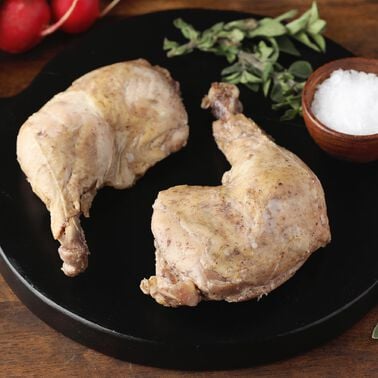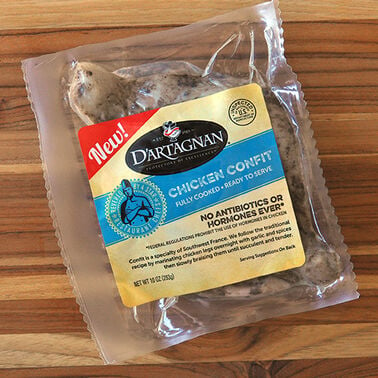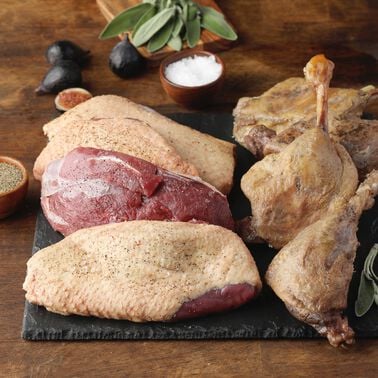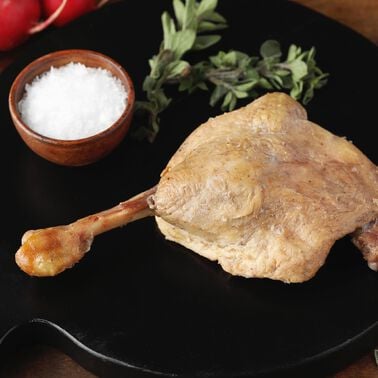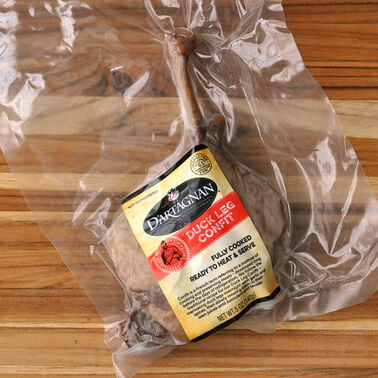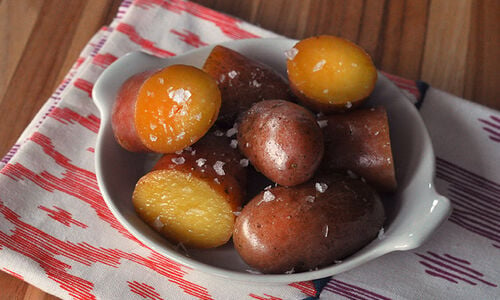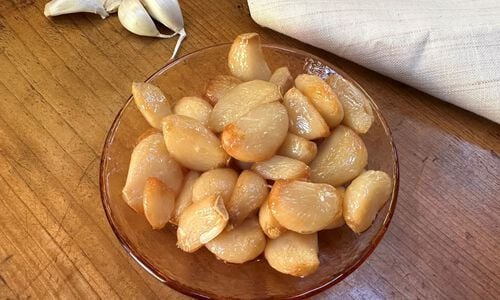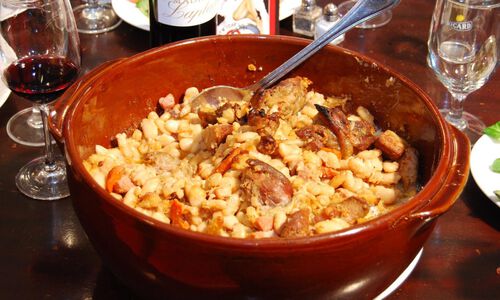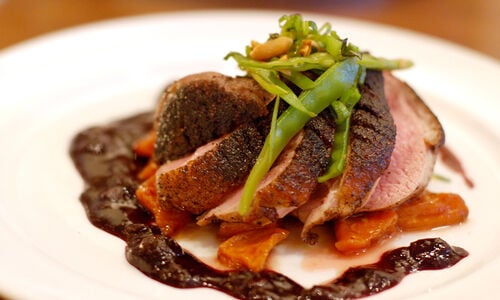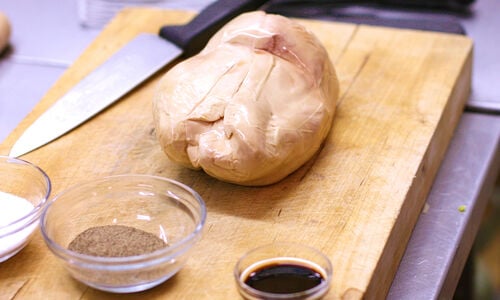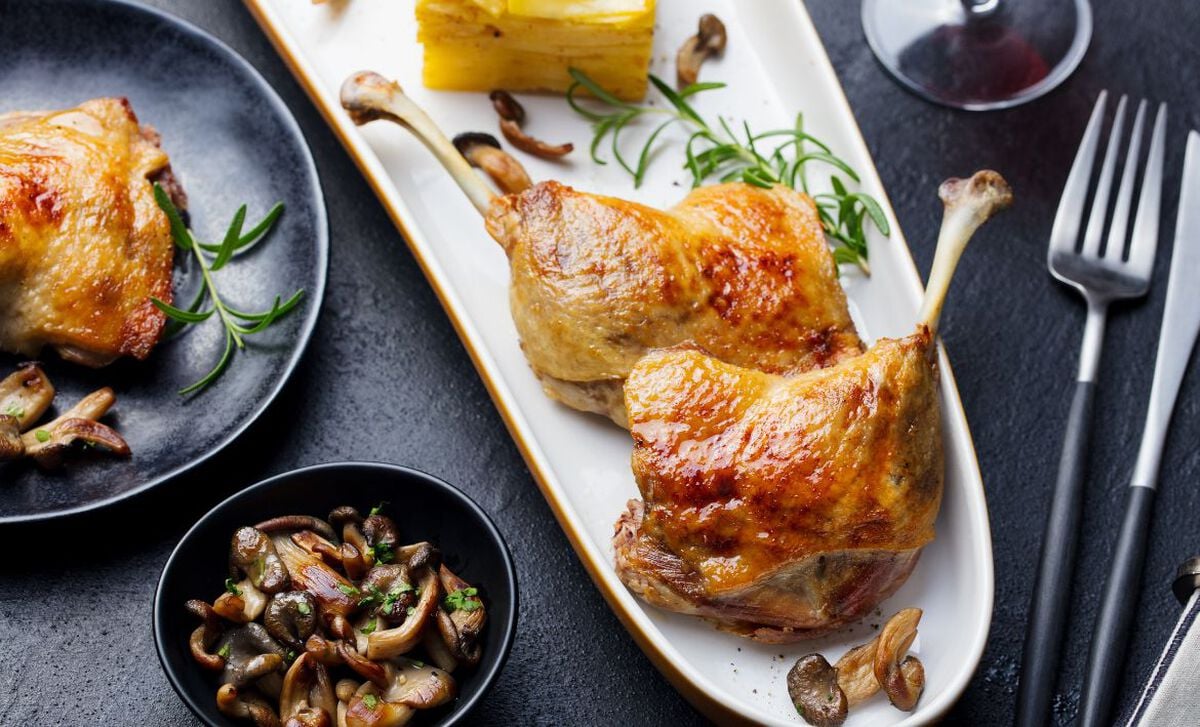
Preserving Meat
We've been preserving food, including meats, since prehistoric times. Before refrigeration we lived in cycle with nature, preserving the bounty of the season. Some techniques that developed: smoking, curing, drying, and slow cooking.
With the confit technique, meats are cooked in fat for a long time, sometimes days, at a low temperature. Once cooked, the meat is placed in a jar and covered with the rendered fat. In the days before vacuum packing, confit meats were placed in crockery pots or jars filled with duck fat, then covered with pork fat, and stored in a cool cellar. This impenetrable top protected the confit throughout the long winter and on into the spring.
Confit in France
In Gascony, the Southwest region of France, you’ll still find many small jars filled with confit of all kinds stored in the cellars. Duck leg confit is a favorite in that region, and is a vital ingredient in the classic cassoulet. Because it is so tender, duck confit can be shredded and served over salad, in stews, or on bread. But confit can be made from any part of the bird. Legs, breasts, giblets, and even foie gras can be salted and simmered, then preserved in fat.
“A Gascon will fall to his knees for a good confit,” goes an old saying. And it’s true that confit meats will add a dimension to any dish in which they are used. Many feel that cassoulet cannot be made without some confit in it, and garbure, a regional stew, usually contains confit.
Preserving Vegetables
Another secret of Gascon cooking is garlic confit. The slow simmer in duck fat takes the punch out of garlic, rendering mellow and flavorful cloves that are delightful when spread onto bread or whipped into potatoes. They add flavor to any savory dish and can replace fresh garlic in many recipes.
A popular method of preserving summer’s bounty is tomato confit. In most cases, tomatoes are sun-dried (or slowly roasted in the oven), given a brief dip in boiling vinegar, packed into jars, and then topped with olive oil. While the tomatoes are not cooked in the oil, packing them in the oil still places them firmly in the confit camp. It’s an effective method for tomato preservation that’s been used in Europe for generations.
Confit trivia: When Henri IV, who hailed from Gascony, was king of France he sent for whole barrels of confit from home, since nobody in Paris made it!
